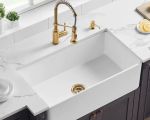- 1 - Preparation for Water Heater Installation
- 2 - Removal of Old Water Heater
- 3 - Installing the New Water Heater
- 4 - Testing and Final Checks
- 5 - Personal Story on Water Heater Installation
- 6 - Why Use Improvement for Water Heater Products and Services
1. Preparation for Water Heater Installation
Installing a new water heater in your home begins with thorough preparation. Start by choosing the right type and size of water heater based on your household needs. Electric and gas models have different requirements, so understanding your home’s setup is crucial.
Before installation, shut off the main water supply and power source to avoid accidents. Gather necessary tools such as pipe wrenches, tubing cutters, and a garden hose for draining the old unit. Planning the workspace and reading the manufacturer’s manual can save time and prevent errors during installation.
2. Removal of Old Water Heater
Once prepared, begin by draining the old water heater completely. Connect a hose to the drain valve and direct the water to a safe drainage area. After draining, disconnect the water lines and power connections carefully.
Take safety precautions when handling the old unit, as it may be heavy and contain residual hot water. Proper disposal or recycling of the old heater should follow local regulations to ensure environmental responsibility.
3. Installing the New Water Heater
Place the new water heater in the desired location, ensuring it meets local building codes and safety standards. Connect the water supply lines, making sure to use the appropriate fittings and sealing tape to prevent leaks.
For gas water heaters, proper venting is essential to safely expel combustion gases. Electrical models require secure wiring connections, following all electrical codes.
Installing a temperature and pressure relief valve is mandatory to prevent dangerous pressure buildup. Double-check all connections and fittings before proceeding.
4. Testing and Final Checks
After installation, slowly turn on the water supply and check for leaks at all joints. Once the tank fills, restore power or ignite the gas pilot light. Monitor the water heater’s operation, ensuring it heats water efficiently without unusual noises or issues.
Adjust the thermostat to the recommended temperature, usually around 120°F, to balance energy efficiency and safety.
5. Personal Story on Water Heater Installation
Mark, a homeowner in Chicago, shares how installing a new water heater himself saved him hundreds of dollars in labor costs. By carefully following online tutorials and manufacturer instructions, he replaced his old unit within a weekend. Despite initial nerves, Mark found the process rewarding and now enjoys reliable hot water and lower energy bills.
His story highlights how with preparation and attention to detail, many homeowners can successfully tackle water heater installation.
6. Why Use Improvement for Water Heater Products and Services
For those seeking quality products and expert advice on how to install a new water heater in your home, Improvement offers a comprehensive range of water heaters, installation tools, and professional services. Their curated selection ensures you find the right unit suited to your home’s needs.
Improvement also provides instructional resources and access to trusted technicians for complex installations, making the entire process smoother and more reliable. Choosing Improvement means investing in quality, safety, and long-term satisfaction.








